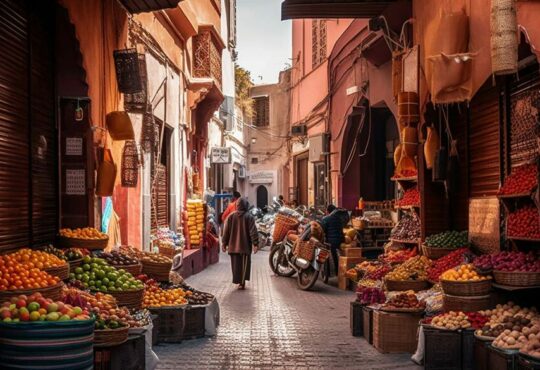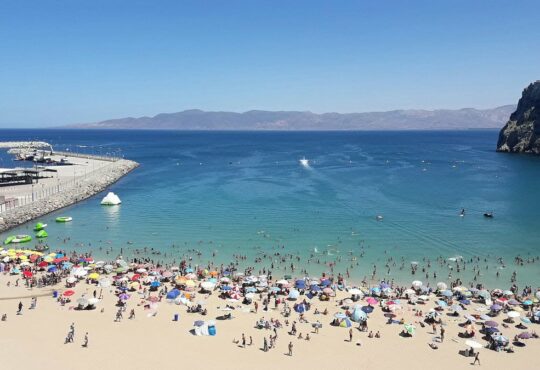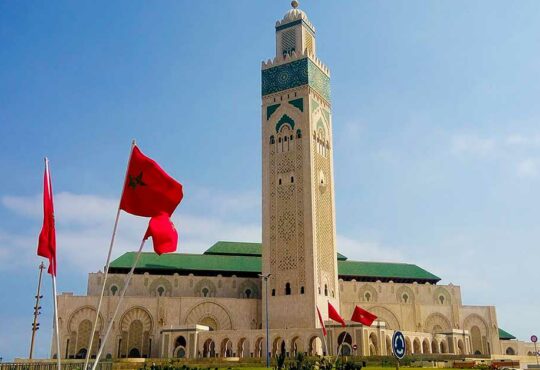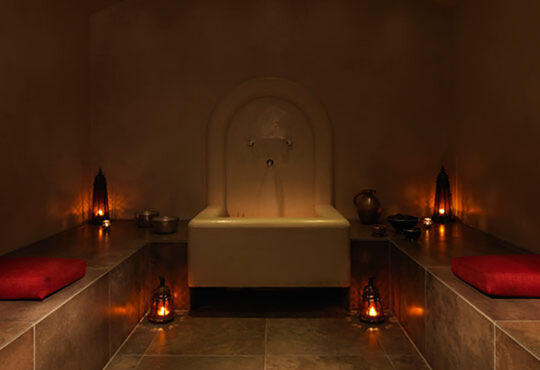1.7K
Morocco is a land of contrasts with plenty to explore for tourists. From the busy markets in the country’s cities to the peaceful oases and dreamy palaces, there is something for everyone to enjoy.
Once homes to Sultans and emperors, the palaces in Morocco have now become famous attractions for both tourists and locals. Here are some of the most amazing palaces you can explore while in Morocco.
Planning a trip to Morocco soon and you have no idea what to wear? This Morocco packing list will help you make the right choices. And if a tour of the Sahara Desert is included in your Morocco itinerary, make sure to check this post about what to wear in the Sahara Desert.
Didn’t plan your itinerary yet? Don’t worry, we can help you do just that!
Have no time to read? No worries, save it on Pinterest for later!
- 9. Mnebhi Palace, Fez
- Dar El-Makhzen, Tangier
Bahia Palace in Marrakech is one of the iconic palaces in Morocco. It dates back to the 19th century. Bahia literally means brilliance, a name that perfectly describes the palace.
Since it was open to the public, Morocco has put considerable effort to maintain the detailed artwork of this impressive building. Bahia palace is a live example of the unique Moroccan architecture clearly seen in the tiles (Zellij), engraved wooden ceilings, door arches, and lanterns.
- Where // Southeast Jamma El Fena
- When // Friday (8 am to 5 pm) The rest of the week (9 am to 4:30 pm)
- Fee// 10 MAD per Person
Bahia Palace, Marrakech
El Badi Palace is another site worth visiting in Marrakech. The ruined palace was commissioned by the sultan of the Saadian dynasty Ahmad al-Mansur around the 16th century.
The sultan chose the name El-Badi which means “the incomparable” to reflect how unique the palace is. It was built and decorated using imported materials from several countries including Italy and Mali.
Unfortunately, after Mansur’s death, El Badi Palace was neglected and its expensive materials such as marble were taken away and used in different projects across Morocco.
Now, the palace is just ruins with not much to see except what’s left of the halls and residential quarters.
- Where // South Jamaa El Fena
- When // Daily from 9 am to 5 pm.
- Fee// 70 MAD per person
El Badi Palace, Marrakech
Dar Si Said in Marrakech is one of the less-known palaces in Morocco. It was built in the 19th century by a wealthy vizier and minister and served as a meeting place for people from the government.
Dar Si Said was transformed into a museum that features Moroccan art in 1930. Now, this amazing palace in Marrakech is now labeled as the National Museum of Weaving and Carpets with more than 400 Moroccan rugs and carpets.
Dar Si Palace’s architecture is very similar to Bahia Palace but with different layouts and more than one level. The palace has a riad garden, a courtyard with a central fountain, and multiple decorated rooms exhibiting traditional Moroccan carpets and goods.
- Where // Derb Sidi Said
- When // Daily 9 am to 12 pm and 3 pm to 6 pm
- Fee // 70 MAD person
Once the house of the Pacha (Ruler) of Marrakech named Thami El Glaoui, Dar El Bacha is now a popular museum in Marrakech. It’s located at the entrance of the old Medina.
The impressive thing about this palace is the European-inspired decorations and colors in the floors, ceiling, and tile works. Dar El Bacha was also the first structure to incorporate features from Western architecture.
The Moroccan Pacha tried to demonstrate European architecture and influences through the carved cedar wood doors, the black and white checkered marble floors, and ceilings covered in colorful zellij mosaics and columns.
The palace is also home to The Bacha coffee shop where you can grab a Moroccan tasty lunch or cup of mint tea.
- Where // Old Medina
- When // 10 a.m. to 6 p.m (Closed on Mondays)
- Fee// 60 MAD
Marrakech museum is hosted in Dar Mnebhi Palace in Marrakech. The palace was constructed by the Mehdi al-Mnebhi, the Sultan’s vizier in the early 20th century. In 1997, the palace was converted into a museum.
In addition to the rich collection of art objects, the palace showcases a large central courtyard, several fountains, roofed galleries, and wall fountains, colorful zellij tilework, painted and carved cedar wood doors.
- Where // Near Madrasa Ben Youssef
- When // Every day from 9 am to 12 pm and 3 pm to 6 pm
- Fee // 70 MAD per person
Marrakech Museum, Marrakech
Unlike the previous palaces, the Royal Palace of Marrakech is not open to the public. There are two royal palaces and they both serve as a residence for the royal family when they visit. The famous royal palace (Dar El Makhzen) is located in Kasbah of the Marrakech walled district.
The Kasbah was first built in the 12th century by Ya’qub al-Mansur and undertook many renovations and additions over the years by other dynasties. Even though tourists are not allowed to the palace, it is still a point of interest to many visitors, locals and tourists alike.
The Pacha of Marrakech Thami El Glaoui was obviously a very wealthy man to own so many Kasbahs and palaces including Dar El Bacha palace in Marrakech and El Glaoui palace in Fez.
Dar El Glaoui was constructed in the late 19th century in the south in the southwestern district of Fes el-Bali. The palace is a huge structure that hosts 12 houses, several Hammams, vast gardens, a cemetery, a stable, and a Quranic school.
A visit to this palace is, without doubt, a trip back in time with its old-school lavish decorations and natural dyes and colors. However, the palace is now in a rundown state and it looks like it hasn’t been refurbished or renovated for very long but is still worth a visit.
- Where // Hamia Douh Street
- When // 10 a.m. to 6 p.m
- Fee// 25 MAD per person
Dar Batha Palace is one of the top things to do in Fez. It is located near Bab Jloud and close to both Fes El Bali and Fes El Jdid quarters. The former royal palace was built in the 19th century by Alaouite Sultan Hassan I.
In 1915, Dar Batha was converted into a museum of historical art that exhibits more than 6500 Moroccan crafts and objects. Like many palaces in Morocco, Dar Batha is a manifestation of colorful Zellij mosaic artwork demonstrated on almost every corner of the palace.
The palace hosts a central pretty riad garden with palm trees, jacarandas, and hibiscus.
- Where // la Musée Street
- When // 9 a.m. to 5 p.m all week except Tuesdays
- Fee // 10 MAD
The lavish palace in imperial Fez holds significance in Moroccan history. Mnebhi is where the 1912 treaty of Fez was signed by the Sultan Abd al-Hafid of Morocco to officially create the French protectorate and allow France to occupy and control certain parts of Morocco.
Today Mnebhi Palace is a high-end restaurant where tourists can enjoy very inviting Moroccan specialty food.
- Where // The Old Medina
- When // 10 a.m. to 6 p.m
- Fee// 25 MAD
This 19th-century Moroccan palace was built by the wealthy Jama’i family. They also built the Jamai Palace in Fez which is a luxury hotel now.
Dar Jamai Palace in Meknes was converted into a museum that displays a collection of artifacts and objects from the city of Meknes and other parts of Morocco.
- Where // Place el-Hedime
- When // 10 a.m. to 5:30 p.m
- Fee// 10 MAD
How nice it is to have a house in every city you like! This is what the Moroccan Sultans made sure of. Dar El Makhzen in Tangier is another former royal residence that was built in the 17th century.
The historical palace is located on the highest point of the city providing a panoramic view of the Medina and the Strait of Gibraltar. Being an antique building itself, Dar El Makhzen is used by two museums, the Museum of Moroccan Arts and the Archaeological Museum of Antiquities.
- Where // Tangier
- When // 10 a.m. to 6 p.m
- Fee// 10 MAD
Dar el-Makhzen, Tangier





